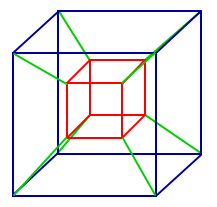Take any four digit number (whose digits are not all identical), and do the following:
- Rearrange the string of digits to form the largest and smallest 4-digit numbers possible.
- Take these two numbers and subtract the smaller number from the larger.
- Use the number you obtain and repeat the above process.
What happens if you repeat the above process over and over? Let’s see…
Suppose we choose the number 3141.
4311-1134=3177.
7731-1377=6354.
6543-3456=3087.
8730-0378=8352.
8532-2358=6174.
7641-1467=6174…
The process eventually hits 6174 and then stays there!
But the more amazing thing is this: every four digit number whose digits are not all the same will eventually hit 6174, in at most 7 steps, and then stay there!
Presentation Suggestions:
Remember that if you encounter any numbers with fewer than has fewer 4 digits, it must be treated as though it had 4 digits, using leading zeroes. Example: if you start with 3222 and subtract 2333, then the difference is 0999. The next step would then consider the difference 9990-0999=8991, and so on. You might ask students to investigate what happens for strings of other lengths or in other bases.
The Math Behind the Fact:
Each number in the sequence uniquely determines the next number in the sequence. Since there are only finitely many possibilities, eventually the sequence must return to a number it hit before, leading to a cycle. So any starting number will give a sequence that eventually cycles. There can be many cycles; however, for length 4 strings in base 10, there happens to be 1 non-trivial cycle, and it has length 1 (involving the number 6174).
How to Cite this Page:
Su, Francis E., et al. “Kaprekar’s Constant.” Math Fun Facts. <http://www.math.hmc.edu/funfacts>.
Fun Fact suggested by:
Byron Walden

